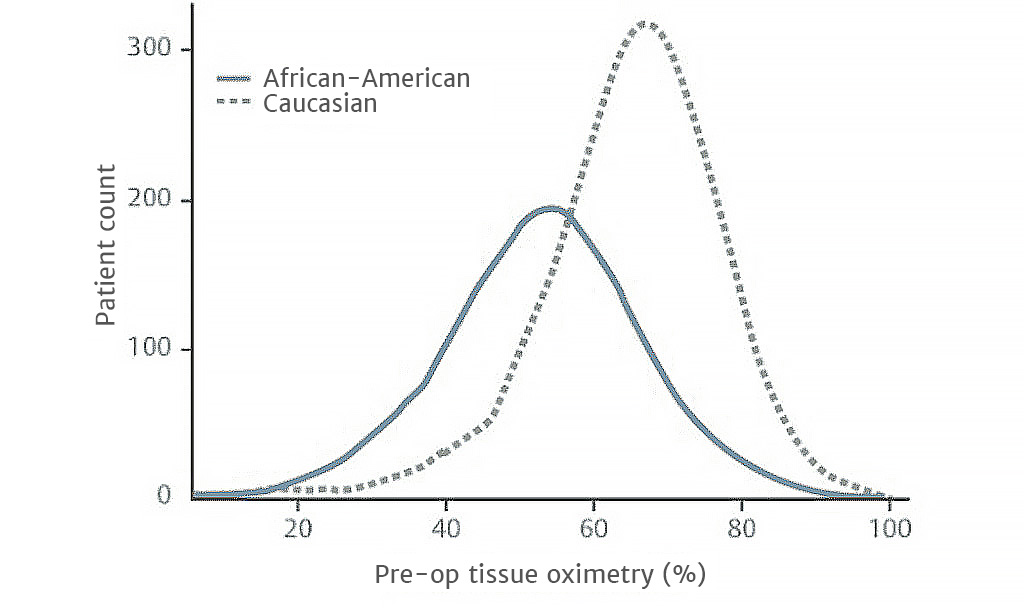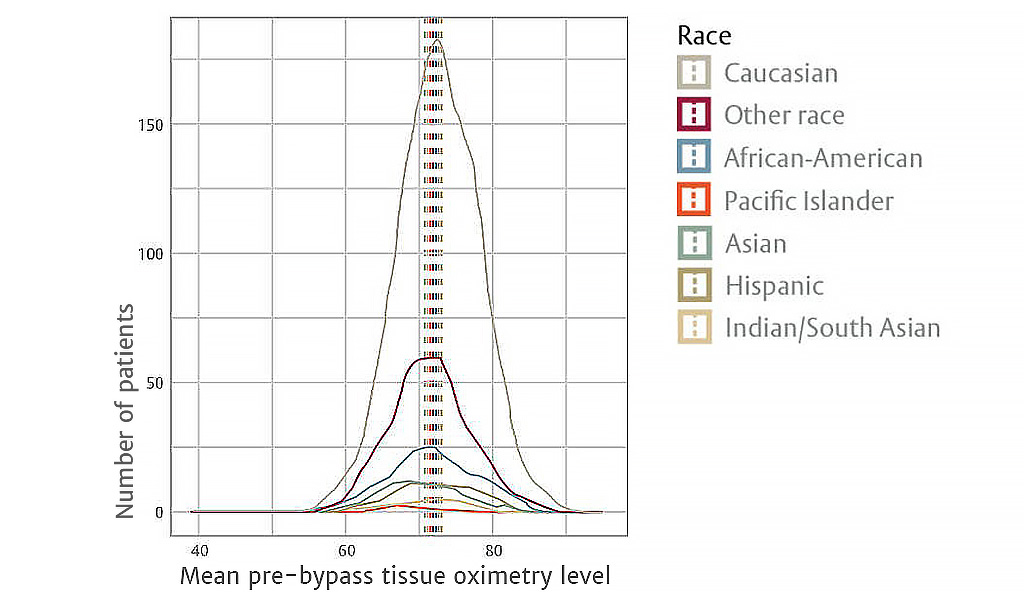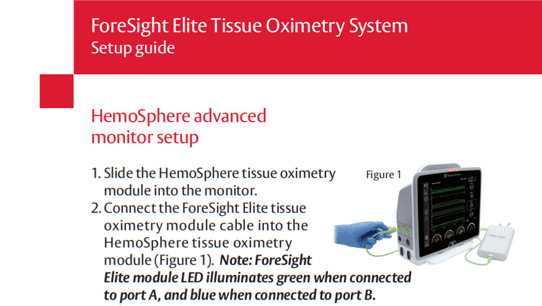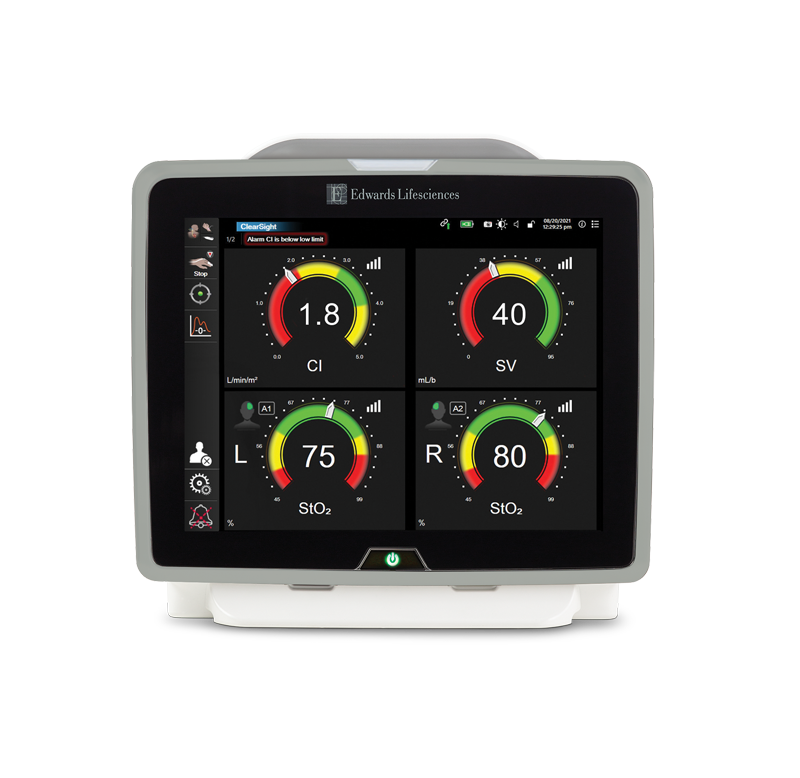ForeSight tissue oximetry sensor

The right monitoring makes a difference –
for all your patients' differences

No patient is safe from the risks of cerebral desaturations. But now, the tissue oximetry and advanced hemodynamic insights you need to identify and even reverse cerebral desaturations for a diverse patient population are available on one monitor.
ForeSight tissue oximetry system:
- Accounts for patient-to-patient differences, including skin tone, size, age, skin-to-cortex distance and acuity
- Delivers absolute StO2 values, making a preinduction baseline optional
- Integrates with HemoSphere platform for an all-in-one view of patient perfusion
With the ForeSight system, you can have the reliable, actionable tissue oximetry insights you need to intervene when it matters most.
The ForeSight sensor difference
Across a diverse patient population
As part of a complete haemodynamic profile
Designed for patient differences
A tissue oximetry sensor designed with patient differences in mind
Due to the limitations in some other tissue oximetry system designs, patient differences including melanin or bilirubin concentrations, skin-to-cortex distance, etc., can cloud the accuracy – and therefore the reliability – of oxygenation measures.
With a unique sensor design and exclusive fifth wavelength of near infrared light (NIRS), the ForeSight system can account for these patient differences – enabling reliable StO2 measures from patient to patient.
Study shows ForeSight system accounts for individual differences in melanin
ForeSight system is designed to penetrate 25% deeper than other technologies
The ForeSight system is designed to penetrate deeper. At 2.5 cm, the ForeSight sensor can provide reliable readings for patients with greater than 2 cm scalp-cortex distance.
Understanding the role of melanin in tissue oximetry
Absolute values, actionable insights

Preinduction baseline optional
The realities of the operating room don’t always allow for the opportunity to set a preinduction baseline – but with the ForeSight system you can start monitoring without delay.
The ForeSight system provides continuous, absolute StO2 readings without the need for a preinduction baseline – while still giving you the freedom to set treatment thresholds and trend from a patient baseline.

Algorithms tailored to placement on body
The ForeSight system algorithms are calibrated and validated to both cerebral and somatic regions:
- Cerebral oximetry SctO2 calibrated and validated to SjvO2
- Somatic oximetry SmtO2 calibrated and validated to ScvO2
Additionally, you can view regional oxygenation values specific to sensor location via HemoSphere advanced monitoring platform.

Actionable insights to protect
Because the ForeSight system integrates with the HemoSphere advanced monitoring platform, you get more than numbers – you get comprehensive insights into patient perfusion, as well as the ability to identify the root cause of imbalances.
Cerebral and somatic tissue oxygen desaturations are common
All-in-one monitoring
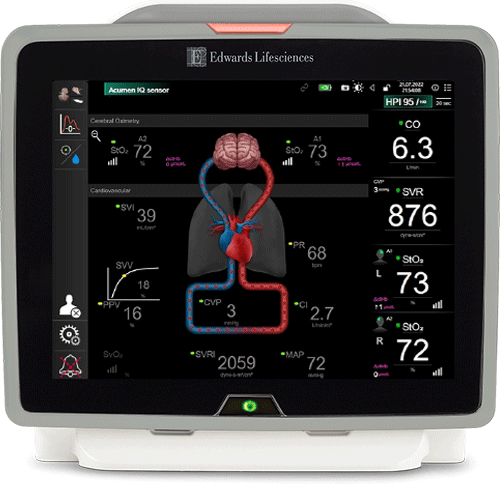
One monitor, comprehensive insights
Tissue oximetry measures are only one part of a surgical patient’s hemodynamic profile.
That’s why the ForeSight system is available as part of the HemoSphere advanced monitoring platform – making it the only system that allows you to see a comprehensive view of patient perfusion (including pressure, flow and tissue oximetry) on the same monitor.
This “all-in-one” view delivers comprehensive insights into patient perfusion that can help you drill down to identify the root cause of imbalances – enabling you to administer interventions with confidence.
Another parameter available on HemoSphere platform is Hypotension Prediction Index (HPI), available through Acumen HPI software. This first-of-its kind of predictive software alerts you to the likelihood of a patient trending toward hypotension – may help to prevent or mitigate cerebral desaturations caused by hypotension.
Edwards clinical education
Comprehensive education empowering clinical advancement
With a long-term commitment to improving the quality of care for surgical and critical care patients through education, Edwards clinical education meets you no matter where you are in the learning process – with a continuum of resources and tools that continuously support you as you solve the clinical challenges facing you today, and in the future.
| Model number | Description |
| FSESL | ForeSight Elite large sensor (≥40 kg), 20 sensors/box |
| FSESM | ForeSight medium sensor (≥3 kg), 20 sensors/box |
| FSESS | ForeSight small sensor (<8 kg)*, 20 sensors/box |
| FSESNS | ForeSight non-adhesive small sensor (<8 kg), 10 sensors/box |
* <8 kg for cerebral use and <5 kg for non-cerebral use
Medical device for professional use
For a listing of indications, contraindications, precautions, warnings, and potential adverse events, please refer to the Instructions for Use (consult eifu.edwards.com where applicable).

